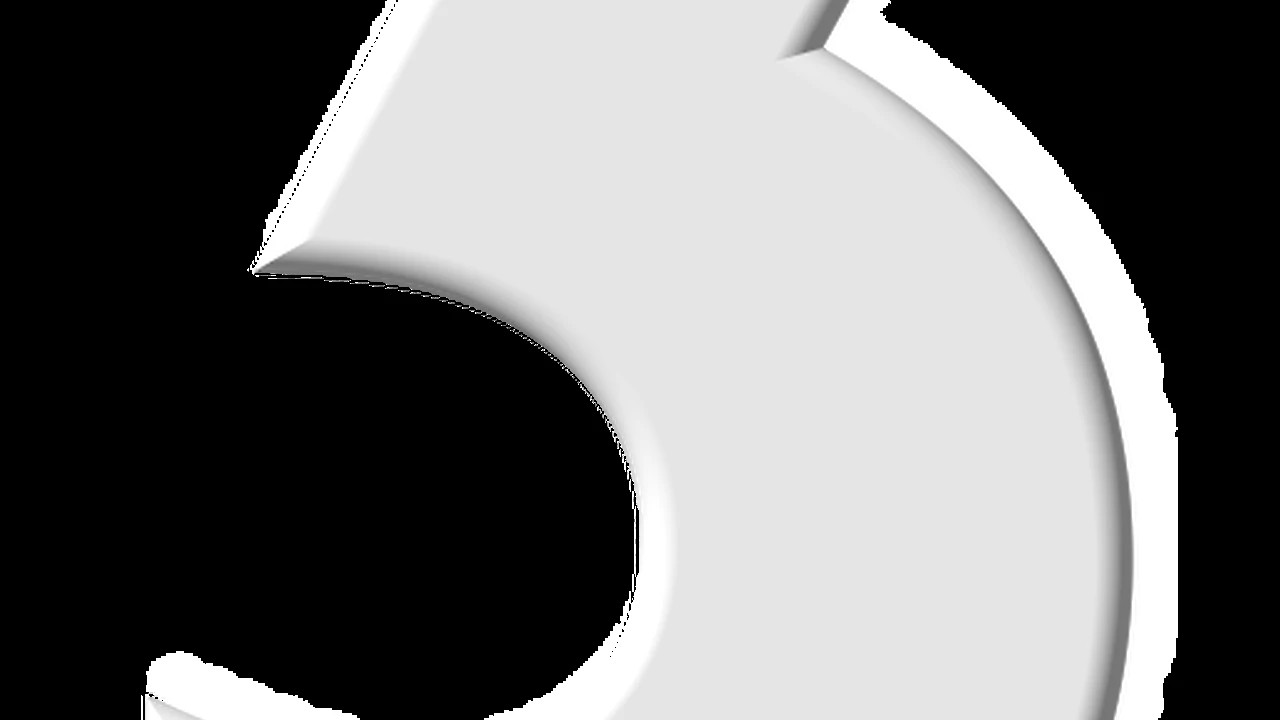Comparing Biofeedback and Neurofeedback for Relaxation
Explore biofeedback and neurofeedback for relaxation and stress management. Learn how these techniques can train your brain.

Comparing Biofeedback and Neurofeedback for Relaxation and Stress Management
Understanding Biofeedback and Neurofeedback Fundamentals
Hey there, ever felt like your body and mind are running on autopilot, especially when stress kicks in? What if you could actually get a real-time peek into what's happening inside you and then learn to control it? That's exactly what biofeedback and neurofeedback are all about. They're pretty cool techniques that help you gain conscious control over physiological processes that are usually involuntary. Think of it as learning to drive your own internal systems, rather than just being a passenger.
Biofeedback, in a nutshell, is a mind-body technique that teaches you how to control your body's functions, such as heart rate, breathing, muscle tension, and skin temperature. It uses electronic sensors to monitor these functions and then provides immediate feedback, usually in the form of visual or auditory signals. For example, you might see a graph on a screen showing your heart rate, and as you try to slow it down, the graph changes in real-time. This immediate feedback helps you understand what mental and physical strategies work best to achieve your desired physiological state. It's like having a mirror for your internal processes.
Neurofeedback, often considered a specialized type of biofeedback, focuses specifically on brainwave activity. Your brain produces different types of electrical waves (alpha, beta, theta, delta, gamma) depending on your state of mind – whether you're relaxed, focused, or sleeping. Neurofeedback uses sensors placed on your scalp to measure these brainwaves. The feedback, again, is usually visual or auditory. For instance, you might be watching a movie, and if your brainwaves shift into a desired pattern (say, more alpha waves for relaxation), the movie gets brighter or the sound gets louder. If your brainwaves go off track, the movie might dim. This trains your brain to produce more of the desired brainwave patterns, leading to improved mental states like better focus, reduced anxiety, or deeper relaxation.
Both techniques are non-invasive and drug-free, making them attractive options for people looking for alternative or complementary approaches to managing stress, anxiety, chronic pain, and even conditions like ADHD or insomnia. They empower you to become an active participant in your own healing and well-being journey.
Biofeedback Techniques and Applications for Relaxation
Alright, let's dive a bit deeper into biofeedback. There are several types, each targeting different physiological responses. The beauty of biofeedback is its versatility; it can be tailored to address a wide range of stress-related issues.
Heart Rate Variability HRV Biofeedback for Stress Reduction
One of the most popular forms is Heart Rate Variability (HRV) biofeedback. HRV is essentially the variation in time between your heartbeats. A higher HRV generally indicates a healthier, more resilient nervous system, while a lower HRV can be a sign of stress or illness. HRV biofeedback teaches you to increase your HRV, which in turn promotes relaxation and improves your body's ability to adapt to stress. You'll typically use a sensor clipped to your earlobe or finger that measures your pulse. Software then displays your HRV in real-time, often with a visual guide like a breathing pacer. The goal is to breathe in a way that synchronizes your heart rate with your breathing, creating a smooth, wave-like pattern. This coherent breathing pattern is incredibly effective for calming the nervous system.
Recommended Products for HRV Biofeedback:
- HeartMath Inner Balance Coherence Plus Sensor: This is a fantastic, user-friendly device that connects to your smartphone or tablet. It uses an ear sensor and guides you through breathing exercises with engaging visuals. It's great for daily practice and tracking your progress.
- Price: Around $150-$200 USD.
- Use Case: Daily stress management, improving emotional regulation, enhancing focus.
- Comparison: Very intuitive and has a strong focus on emotional coherence.
- Elite HRV CorSense: A more advanced finger sensor that offers highly accurate HRV readings and integrates with various apps. It's popular among athletes and those who want deeper data analysis.
- Price: Around $100-$150 USD.
- Use Case: Detailed HRV tracking, performance optimization, stress recovery.
- Comparison: Offers more raw data and flexibility for advanced users.
- Biofeedback Xpert by Thought Technology: This is a professional-grade system, often used in clinical settings. It's much more expensive but offers comprehensive physiological monitoring.
- Price: Several thousand USD.
- Use Case: Clinical therapy, research, advanced biofeedback training.
- Comparison: Top-tier accuracy and versatility, but not for casual home use.
Electromyography EMG Biofeedback for Muscle Tension
Another common type is Electromyography (EMG) biofeedback. This one measures muscle tension. If you're someone who carries a lot of stress in your shoulders, neck, or jaw, EMG biofeedback can be a game-changer. Sensors are placed on the skin over specific muscle groups, and you get feedback on how tense those muscles are. You then learn to consciously relax them, often by practicing progressive muscle relaxation or guided imagery. It's incredibly effective for conditions like tension headaches, TMJ, and chronic back pain.
Recommended Products for EMG Biofeedback:
- MyoTrac Infiniti by Thought Technology: Again, a professional-grade system. It's highly accurate and used by therapists.
- Price: Several thousand USD.
- Use Case: Clinical treatment for muscle pain, rehabilitation.
- Comparison: Gold standard for EMG, but requires professional training.
- Muse S (Gen 2) with Sleep & Meditation Tracking: While primarily a brain-sensing headband, it also offers some basic muscle tension feedback during meditation sessions, helping you relax your facial muscles.
- Price: Around $350-$400 USD.
- Use Case: General relaxation, meditation, sleep improvement.
- Comparison: More of a general wellness device with some biofeedback elements, not a dedicated EMG device.
Thermal Biofeedback for Circulation and Relaxation
Thermal biofeedback measures skin temperature, usually on your fingers or toes. When you're stressed, your blood vessels constrict, and your skin temperature drops. By learning to increase your peripheral blood flow, you can warm your hands and feet, which is a sign of relaxation. This is particularly useful for conditions like Raynaud's phenomenon, migraines, and general anxiety. You might use a small thermistor (temperature sensor) taped to your finger, and watch a display showing your temperature. The goal is to make your temperature rise.
Recommended Products for Thermal Biofeedback:
- Stress Thermometer by Biofeedback Federation of Europe: A simple, affordable device that gives you direct temperature readings.
- Price: Around $30-$50 USD.
- Use Case: Basic relaxation training, managing cold hands/feet due to stress.
- Comparison: Very straightforward, no complex software, just a direct reading.
- Thought Technology ProComp 2: Another professional system that includes thermal sensors as part of its comprehensive suite.
- Price: Several thousand USD.
- Use Case: Clinical settings, multi-modal biofeedback.
- Comparison: Highly accurate and versatile, but for professional use.
Other Biofeedback Modalities for Comprehensive Wellness
Beyond these, there's also Electrodermal Activity (EDA) or Galvanic Skin Response (GSR) biofeedback, which measures sweat gland activity (a proxy for arousal and stress), and Respiration biofeedback, which monitors breathing patterns. The common thread across all these biofeedback types is the principle of self-regulation. You're given a window into your body's responses, and through practice, you learn to influence them consciously. It's a powerful tool for gaining mastery over your own physiological state, leading to profound relaxation and stress reduction.
Neurofeedback Techniques and Applications for Brain Training
Now, let's shift gears to neurofeedback, which is all about training your brainwaves. This is where things get really interesting, as you're directly influencing the electrical activity of your brain. It's like giving your brain a workout to make it more efficient and balanced.
Alpha Theta Training for Deep Relaxation and Creativity
One popular neurofeedback protocol is Alpha-Theta training. This aims to increase alpha waves (associated with relaxed, meditative states) and theta waves (linked to deep relaxation, creativity, and access to subconscious material). It's often used for deep relaxation, trauma processing, and enhancing creativity. During a session, you might be in a dimly lit room, listening to sounds that change based on your brainwave activity. The goal is to gently guide your brain into these deeper, more relaxed states.
SMR Beta Training for Focus and Calm
Another common protocol is Sensorimotor Rhythm (SMR) training, which focuses on increasing SMR waves (a specific type of beta wave) while decreasing slower waves (theta) and faster waves (high beta). SMR is associated with calm focus and improved motor control. This type of training is often used for ADHD, anxiety, and sleep issues. You might play a video game with your mind, where the game progresses only when your brain produces the desired SMR waves.
Delta Training for Sleep Improvement
Delta wave training is specifically aimed at improving sleep. Delta waves are the slowest brainwaves and are dominant during deep, restorative sleep. By training your brain to produce more delta waves, neurofeedback can help individuals with insomnia or poor sleep quality achieve more restful sleep.
Recommended Products for Neurofeedback:
- Muse S (Gen 2) Brain Sensing Headband: This is probably the most accessible and popular consumer-grade neurofeedback device. It measures brain activity and provides real-time audio feedback during meditation sessions. It helps you stay focused and calm by giving you sounds of weather (calm sounds for calm mind, stormy sounds for wandering mind).
- Price: Around $350-$400 USD.
- Use Case: Meditation, sleep tracking, general mental wellness, basic neurofeedback.
- Comparison: User-friendly, great for beginners, but not as precise or customizable as professional systems.
- NeuroSky MindWave Mobile 2: A more affordable option that measures brainwave activity and connects to various apps for brain training games and exercises.
- Price: Around $100-$150 USD.
- Use Case: Educational purposes, basic brainwave monitoring, some neurofeedback games.
- Comparison: Good entry-level device, but less robust than Muse or professional systems.
- OpenBCI Cyton Biosensing Board: This is for the more tech-savvy and researchers. It's an open-source platform for biosensing, including EEG. You'd need to build your own setup and software.
- Price: Around $500-$1000+ USD (for components).
- Use Case: Research, custom neurofeedback applications, advanced biohacking.
- Comparison: Highly customizable and powerful, but requires significant technical knowledge.
- BrainMaster Atlantis I/II: These are professional-grade neurofeedback systems used by clinicians. They offer multi-channel EEG recording and advanced training protocols.
- Price: Several thousand USD.
- Use Case: Clinical treatment for ADHD, anxiety, depression, trauma.
- Comparison: Gold standard for clinical neurofeedback, highly accurate and versatile.
Key Differences and Similarities Biofeedback vs Neurofeedback
While both biofeedback and neurofeedback fall under the umbrella of self-regulation techniques, there are some key distinctions to keep in mind when you're trying to figure out which one might be right for you.
Targeted Physiological Systems and Brainwave Specificity
The most significant difference lies in what they're directly measuring and training. Biofeedback is broader; it targets various physiological responses like heart rate, muscle tension, skin temperature, and breathing. It's about gaining control over these bodily functions. Neurofeedback, on the other hand, is much more specific. It exclusively focuses on brainwave activity. It's about training your brain to produce more of certain brainwave patterns and less of others, directly influencing your mental state and cognitive functions.
Applications and Conditions Addressed
Because of this difference in focus, their primary applications can vary. Biofeedback is often used for conditions where physical symptoms of stress are prominent: think tension headaches, migraines, chronic pain, high blood pressure, or even irritable bowel syndrome. It helps you learn to relax your body to alleviate these symptoms. Neurofeedback is more commonly applied to conditions that have a strong neurological component, such as ADHD, anxiety disorders, depression, insomnia, PTSD, and even enhancing peak performance in athletes or executives. It aims to re-regulate brain activity to improve mental and emotional functioning.
Training Focus and Learning Process
The training process also differs slightly. In general biofeedback, you're learning to consciously control a specific bodily function. For example, with HRV biofeedback, you're actively trying to breathe in a way that optimizes your heart rate variability. With neurofeedback, while you're still actively engaged, the learning is often more subconscious. Your brain learns through operant conditioning – it's rewarded (e.g., a movie gets brighter) when it produces the desired brainwave patterns, and it naturally starts to produce more of those patterns over time, often without you consciously 'trying' to do so.
Accessibility and Home Use Options
In terms of accessibility for home use, general biofeedback devices (especially for HRV and thermal) tend to be more readily available and often more affordable for consumers. Devices like the HeartMath Inner Balance are great examples. While consumer-grade neurofeedback devices like Muse exist, professional neurofeedback systems are significantly more complex and expensive, typically requiring a trained practitioner to administer. This is because brainwave training is more nuanced and requires precise protocols.
Choosing the Right Approach for Your Wellness Journey
So, how do you decide between biofeedback and neurofeedback, or even if one of them is right for you? It really comes down to your specific goals and the nature of the challenges you're facing.
When to Consider Biofeedback for Relaxation and Physical Symptoms
If your primary concerns revolve around physical manifestations of stress – like persistent muscle tension, frequent headaches, cold hands and feet due to anxiety, or difficulty regulating your breathing – then biofeedback might be an excellent starting point. It provides direct, tangible feedback on these physical responses, empowering you to learn relaxation techniques that directly impact your body. It's also a great choice if you're looking for a non-pharmacological way to manage chronic pain or stress-related physiological conditions. Many people find it easier to grasp the concept of consciously relaxing a muscle or slowing their heart rate than directly influencing brainwaves.
When to Consider Neurofeedback for Mental and Emotional Regulation
If your struggles are more centered on mental and emotional regulation – such as persistent anxiety, difficulty focusing, ADHD symptoms, sleep disturbances (insomnia), mood swings, or even recovering from trauma – then neurofeedback could be a more targeted and powerful option. By directly training your brainwaves, neurofeedback aims to re-regulate the underlying neurological patterns that contribute to these conditions. It's about optimizing your brain's performance and resilience. While consumer devices like Muse can offer a taste of neurofeedback for general wellness, for more significant clinical issues, working with a certified neurofeedback practitioner is highly recommended due to the complexity of brainwave protocols.
Combining Approaches for Holistic Wellness
It's also worth noting that these aren't mutually exclusive. In fact, many practitioners integrate both biofeedback and neurofeedback into a comprehensive treatment plan. For example, someone with anxiety might benefit from HRV biofeedback to learn immediate relaxation techniques for their body, while simultaneously undergoing neurofeedback to re-regulate their brain's anxiety-producing patterns. This holistic approach can lead to more profound and lasting changes. Ultimately, both biofeedback and neurofeedback offer incredible potential for self-improvement and well-being. They empower you to take an active role in understanding and optimizing your own mind and body, leading to greater relaxation, resilience, and overall health.
:max_bytes(150000):strip_icc()/277019-baked-pork-chops-with-cream-of-mushroom-soup-DDMFS-beauty-4x3-BG-7505-5762b731cf30447d9cbbbbbf387beafa.jpg)






